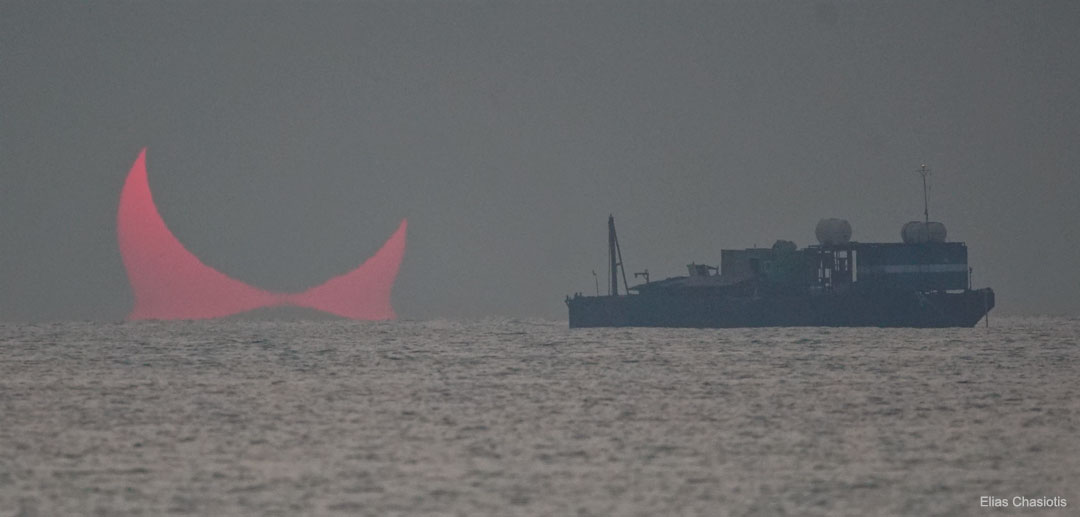
By DONALD G. McNEIL Jr.
NYT Health
In 2017, a terrible flu season in Australia presaged an American outbreak in which 79,000 died. Experts advise getting the shot soon.
Published date: October 4, 2019 at 03:00AM






On December 31, 1837, Democrat Amasa J. Parker, congressman from New York, sat down in his quarters in Mrs. Pittman’s boarding house in Washington, D.C., to write a letter to his wife, miles away at their Catskills home in Delhi, New York. Continue reading.
On December 31, 1881, Charles J. Guiteau, the assassin of President James Garfield, wrote a New Year’s greeting to his jailer. Continue reading.
Click here to search Today in History for other historic moments.







Thank You!
Thank you for all you do to support the nation’s Library. With new books, films, and music arriving every day, the Library of Congress is your place to discover new ideas. Whether you support us with a gift or simply by spreading the word about what we do, you help us in our mission to connect millions of people around the world with the stories of the world’s past, present, and future.
Spread the word and encourage your friends and family to visit us online or in person and make a gift to the nation’s library today!
U.S. Minister to Mexico James Gadsden, and three envoys of the President of Mexico General Antonio López de Santa Anna Pérez de Lebrón, signed the Gadsden Purchase, or Gadsden Treaty, in Mexico City on December 30, 1853. Continue reading.
Turn-of-the-century progressive reformer John Peter Altgeld was born in Germany on December 30, 1847. Continue reading.
Click here to search Today in History for other historic moments.
Andrew Johnson, the seventeenth president of the United States, was born in Raleigh, North Carolina, on December 29, 1808. Continue reading.
Click here to search Today in History for other historic moments.





Thomas Woodrow Wilson was born on December 28, 1856, in Staunton, Virginia. Continue reading.
Click here to search Today in History for other historic moments.

While recently viewing the Library of Congress exhibition, “Comic Art: 120 Years of Panels and Pages,” I was struck by the effective storytelling Frank King employed in a cartoon drawing for his Gasoline Alley comic strip. In the cartoon, the main character Walt Wallet is depicted as a father whose well-meaning plans to introduce his son to the beauty of the great outdoors have gone awry.

Gasoline alley. Walt, I’m going up the canyon. Drawing by Frank King, 1921. http://hdl.loc.gov/loc.pnp/ppmsca.10592
After an uneventful start to his hike with his son Skeezix, Walt begins to suspect that his friend Doc is sneaking up on the two of them. Walt teasingly says “You can’t fool us!” before realizing they are actually being approached by a bear. A comical slide down a mountain into a river ensues, concluding the narrative. I particularly like how the frightening scene in the top panel alludes to the story’s conclusion.
Curator Sara W. Duke provided me with further context: “At the time this comic strip was created, each comic strip appeared on a separate tabloid page, which gave the artists plenty of room to use the title panel as a prelude to the story. While Walt and Skeezix only encounter one bear, Frank King imagines a much more menacing interaction.”

Cropped section from Gasoline alley. Walt, I’m going up the canyon. Drawing by Frank King, 1921. http://hdl.loc.gov/loc.pnp/ppmsca.10592
Gasoline Alley first appeared in print in 1918 and in 1921 became the first cartoon to show its main characters aging contemporaneously with its readers. It is also the longest running cartoon strip still in production in the United States. The exhibition provides these and many other facts and insights from the history of the art form.
For those of you unable to visit Washington to see the exhibit, please enjoy the online version, which includes digital copies of nearly every item displayed in the physical exhibit space. If you are able to visit the exhibition in person, you will have the luxury of seeing many original drawings close up.
Learn More:
Radio City Music Hall opened to the public on December 27, 1932. Continue reading.
On December 27, 1900, Carry Nation brought her campaign against alcohol to Wichita, Kansas, when she smashed up the bar at the elegant Carey Hotel. Continue reading.
Click here to search Today in History for other historic moments.
